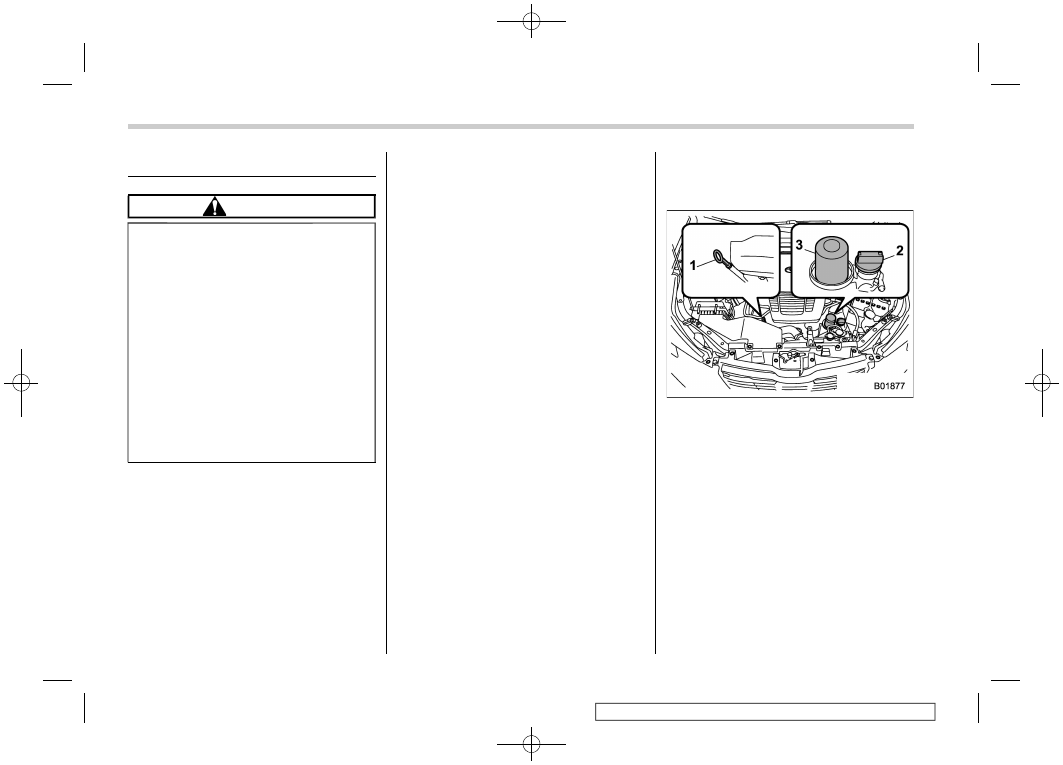Subaru Forester (2019). Instruction - part 54

(452,1)
11-6. Engine oil
CAUTION
.
If the level gauge cannot be
pulled out easily, twist the level
gauge right and left, then gently
pull it out. Otherwise, you may be
injured accidentally straining
yourself.
.
Use only engine oil with the
recommended grade and vis-
cosity.
.
Be careful not to spill engine oil
when adding it. If oil touches the
exhaust pipe, it may cause a bad
smell, smoke, and/or a fire. If
engine oil gets on the exhaust
pipe, be sure to wipe it off.
&
Engine oil consumption
Some engine oil will be consumed while
driving. The rate of consumption can be
affected by such factors as transmission
type, driving style, terrain and tempera-
ture. Under the following conditions, oil
consumption can be increased and may
require refilling between maintenance in-
tervals.
.
When the engine is new and within the
break-in period.
.
When the engine oil is of lower quality.
.
When the incorrect oil viscosity is used.
.
When engine braking is employed
(repeatedly).
.
When the engine is operated at high
engine speeds (for extended periods of
time).
.
When the engine is operated under
heavy loads (for extended periods of time).
.
When towing a trailer
.
When the engine idles for extended
periods of time.
.
When the vehicle is operated in stop-
and-go and/or heavy traffic situations.
.
When the vehicle is used under severe
thermal conditions.
.
When the vehicle accelerates and
decelerates frequently.
Under these or similar conditions, you
should check your oil at least every 2nd
fuel fill-up and change your engine oil more
frequently. Different drivers in the same
car may experience different results. If
your oil consumption rate is greater than
expected, contact your authorized
SUBARU dealer who may perform a test
under controlled conditions.
&
Locations of the oil level
gauge, oil filler cap and oil
filter
1)
Oil level gauge
2)
Oil filler cap
3)
Oil filter
&
Checking the oil level
1. Park the vehicle on a level surface and
turn the ignition switch to the “LOCK”/
“OFF” position. If you check the oil level
just after turning the ignition switch to the
“LOCK”/“OFF” position, wait a few minutes
for the oil to drain back into the oil pan
before checking the level.
Engine oil
450